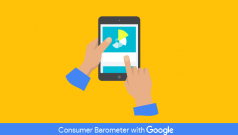The Nielsen Norman Group has published the results of new research into how teens interact with digital devices, and how to design interfaces that work better for teens.
Using a combination of usability testing, field testing, interviews and focus groups, researchers studied a group of 100 teens - aged 13-17; in US, UK and Australia; affluent and disadvantaged; girls and boys - on 210 websites and apps, some specifically targeting teens, others not.
Key findings:
Reasons teens visit websites:
- To achieve some sort of goal related to school, hobbies, friends, news, shopping
- To research products and build wish lists of stuff for adults to buy them
Differences between teens and adults:
- Teens give up more quickly.
- Teens are less cautious, make snap judgments.
- Teens complete fewer tasks successfully.
Why teens perform worse than adults:
- Poorer reading skills
- Less sophisticated research strategies
- "Dramatically" lower levels of patience
Websites on which teens perform best: Sites requiring little reading
Content and layout guidelines:
- Write for impatient users.
- Don't make them read
- Display content in small chunks with lots of white space.
- Use words teens understand.
- Use short sentences and paragraphs.
- Put key points or steps in bulleted lists.
- Write for 6th-grade level or below.
- Teens will skip over any content in tiny text.
- Teens won't tolerate dull content.
- Use visual elements (think pictures).
- Don't overdo interactive elements.
- Fast-loading pages are essential.
- Avoid sounding condescending - teens relate to content created by peers.
- Don't use the word "kid" in reference to teens.
- Provide links that facilitate sharing of content by direct message.
- Design for small, mobile screens.
- Avoid small or closely-spaced elements - make it easy to click on things in touch-enabled devices.
- Frustrated teens will blame your design and not their own undeveloped cognitive abilities.
Teen attitudes:
- Search: Rely on heavily but have trouble formulating queries; click top results in SERP.
- Patience: Hate waiting, easily distracted.
- Trust: Have difficulty assessing credibility.
- Privacy; Hesitant to enter personal information.
- Advertising: Hate popups.
=======================================
Comments:
This disciplined, structured research study largely confirms what we already thought we knew from anecdotal evidence. But there are some gems in there:
- As with every generation, content for teens needs to help them attain some goal of importance to them. They're not just randomly web-surfing.
- Make max use of pictures (vs. words) to get points across.
- Grade 6 reading level is where copy should be written for most adults. Any group with poorer reading skills - which research shows includes teens - needs yet simpler vocabulary and structure.
- Talk to teens as peer-to-peer, not adult-to-child.
- Don't use the word "kids" in any content for teens, and don't create compromise content intended to target both teens and younger children.
- Facilitate link sharing - otherwise teens may take and share screencaps of your ads with no link to your website.
- Resist any temptation to take advantage of teens' difficulty in assessing credibility.
- To be found by teens more easily in search, invest time in finding out the language teens use to search for stuff like yours, and incorporate it into your ads and content.
- Make all your online content load fast. Use Google's free Mobile-Friendly test to assess your design and content, and follow Google's recommendations to decrease loading time.
- Register your website with Google Search Console, to get warnings about too-small text, clickable elements too close together, etc.

 - David
- David






Comments on How to design digital interfaces for teens